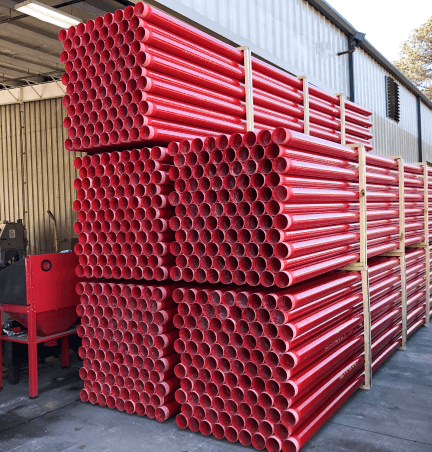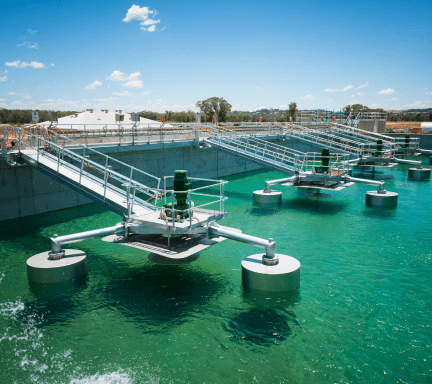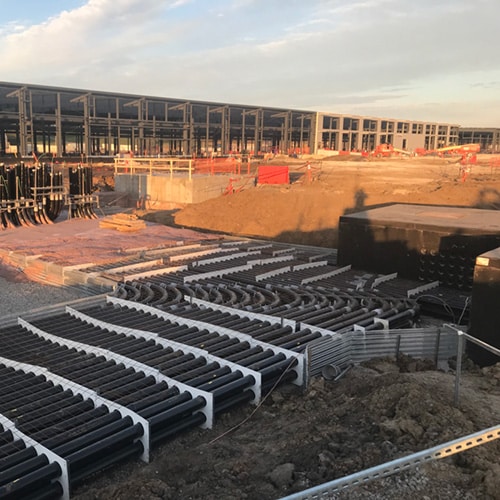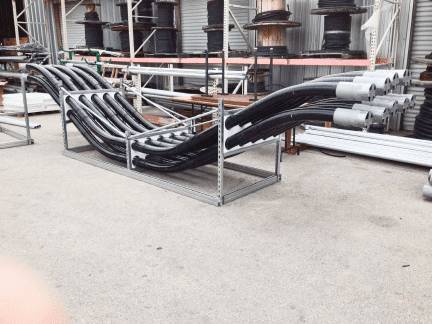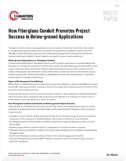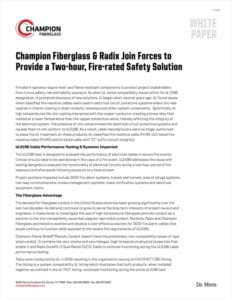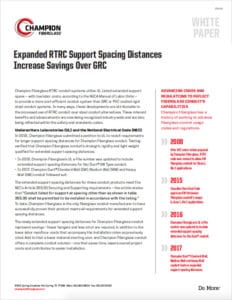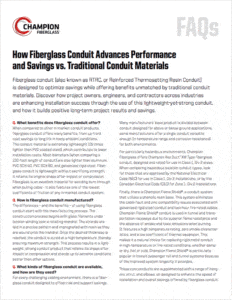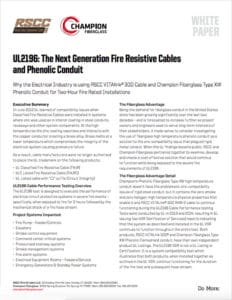White Papers
Download the free RTRC white paper content below. These in-depth explorations of the benefits and commonly encountered questions around fiberglass electrical conduit are designed to fuel better decision making – please contact us with any further questions.
Fiberglass conduit excels in many applications across a variety of industries. And whether the conduit is installed above ground or below, there are specific considerations to address for each. Learn how fiberglass conduit advances project success in below-ground applications through a comprehensive overview examining installation, project benefits and specific product recommendations.
Why the Electrical Industry is using Radix Duralife II Dual Rated CI/CIC Cable and Champion Fiberglass Type XW Phenolic Conduit for Two-Hour Fire Rated Fire
Alarm Installations
In June 2012, UL learned of compatibility issues when Classified Fire-Resistive Cables were used in electrical circuit protective systems where zinc was used as in interior coating in steel conduits, raceways and other system components. Specifically, at high temperatures the zinc coating interacted with the copper conductor creating a brass alloy that melted at a lower temperature than the copper conductors alone, thereby affecting the integrity of the electrical system. The presence of zinc compromised the electrical circuit protective systems and caused them to not conform to UL2196.
Champion Fiberglass RTRC conduit systems utilize UL Listed extended support spans — with low labor costs, according to the NECA Manual of Labor Units — to provide a more cost-efficient conduit system than GRC or PVC-coated rigid steel conduit systems.
Fiberglass conduit (also known as RTRC, or Reinforced Thermosetting Resin Conduit) is designed to optimize savings while offering benefits unmatched by traditional conduit materials. Discover how project owners, engineers, and contractors across industries are enhancing installation success through the use of this lightweight yet-strong conduit, and how it builds positive long-term project results and savings.
In June 2012, UL learned of compatibility issues when Classified Fire-Resistive Cables were installed in systems where zinc was used as in interior coating in steel conduits, raceways and other system components. At the high temperatures the zinc coating vaporizes and interacts with the copper conductor creating a brass alloy. Brass melts at a lower temperature which compromises the integrity of the electrical system causing pre-mature failure.
Conduit, built to route and safeguard electrical cabling and infrastructure, is often an afterthought when it comes to overall project specification. Conventional conduits are fashioned from a common plastic called Polyvinyl Chloride (PVC), steel or steel that is coated in PVC. In recent decades, project owners, engineers and contractors have sought to optimize project economics, streamline installation and ensure long-term performance, adopting fiberglass conduit for an increasing number of industrial and commercial installations. As hundreds of projects in the field have revealed, this modification in material specification has resulted in a significant overall impact to project and facility economics.








